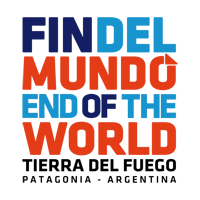Corazón de la Isla Reserve
The Heart of the Island Reserve, located in the center of the province of Tierra del Fuego, was created with the intention of protecting an area with a high scenic and landscape value.
How to get here
Desde la localidad más cercana, Tolhuin, recorrer 12 Km hacia el norte por la ruta nacional 3, luego doblar al oeste (izquierda) continuando por ruta provincial 18 (ex H), 50 Km de ripio aproximadamente.
¿Are you in Tierra del Fuego? Check how to get here from your location
directions_walk directions_carTrekking trails
Ruca trailLocation: The reserve is located in the central area of the Province north of Lake Fagnano. It is integrated all the fiscal lands located between the commune of Tolhuin and the Tierra del Fuego National Park. In addition, the reserve includes the part of Lake Deseado located within the Argentine Republic, all the mirrors and water courses, islands and islets of Chepelmut, Yehuin and Yakush lakes, and the interior lagoons that are located within the limits.
Conservation value:
The scenic value of the Heart of the Island Reserve is indisputable, since it protects sectors of forest, peatlands and a small ecotone portion. In addition, it protects a complex water system, where the lakes Chepelmut, Yehuin and Yakush are interconnected, including the Argentine portion of Lake Deseado and the other water mirrors.
On the other hand, the reserve represents the area of summer concentration of guanacos, which is why it is very important for the conservation of the wild populations of this species, vital for the future development of enterprises based on this fine wool. It also offers the habitat suitable for the red fox Fuegian, the only native canid, currently scarce and at risk of disappearing from Tierra del Fuego.
What services does it offer?
You can perform various activities: rural tourism, sport fishing, bird watching, hiking. In certain areas of the reserve, there are fire places and camping sites.
Description:
The reserve has an approximate area of 100,000 hectares, the largest reserve being the province. At present, around 10,000 hectares are in litigation with private companies claiming the southern portion of the Río Claro ranch for personal undertakings.
The area of the reserve has a cold temperate climate with average annual temperatures that oscillate around 4.5 ° C and annual rainfall of around 450 mm. It has a complex water system, since part of the water courses that run through it drain into the Atlantic Ocean, while others, such as the Claro River, flow into Lake Fagnano. The latter constitutes a binational basin to which correspond the most important water mirrors of the Province, among which the lakes Yehuin and Chepelmuth stand out.
The reserve is included in the zone of deciduous forest, constituted by two arboreal species that grow alone or associated in certain places: the ñire (Nothofagus antarctica) and the lenga (Nothofagus pumilio). The latter is the dominant species; nevertheless some ñirantales are presented, a community that is not represented in other provincial protected areas. Other communities present and of importance in the reserve are the pastures and turbales. Also on the skirting of the northern margin of Lake Fagnano are forests of cherry (Nothofagus betuloides) that occupy a strip at the middle of the slope and are the northernmost distribution that the Province has.
On the other hand, it has a varied birdlife, among which species of high aesthetic value stand out, such as the common cauquén (Chloephaga picta), royal cauquén (Chloephaga poliocephala), black-necked swan (Cygnus melancoryphus), bandurria berry ( Theristicus caudatus), condor (Vultur gryphus), black eagle (Geranoaetus melanoleucus), southern parrot or cachaña (Enicognathus ferrugineus) and Patagonian carpenter (Campephilus magellanicus).
Creation story:
The land occupation of the central area of the Province, which includes the Heart of the Island Reserve, took place from the decade of '20, with leases of fiscal land for livestock enterprises. From this time dates the establishment of cattle activities in the so-called Laguna and Carmen estancias, both located in the current protected area, and of which only the descendants of the Mimica family (Estancia Laguna) have remained as settlers of the area. Meanwhile, other sectors of the Reserve were used as verenadas for cattle from neighboring estancias.
Also dates from that time the creation of a reserve of fiscal lands in favor of the Selk'nam indigenous community, in the headwaters of Lake Fagnano, and which maintained this character until the 70's. At the beginning of it the town of Tolhuin was founded, whose community is developing a growing relationship with the protected area. Forestry use gained development, and sawmills were installed in the areas of Estancia Carmen and in the vicinity of Estancia Laguna.
The Heart of the Island Reserve was created in 1995 by Provincial Decree No. 1499/95 under the category of Multiple Use Reserve management. This creation was promoted by the Fueguino Tourism Institute, interested in establishing new circuits of attraction and strengthening the integration of the central and northern region of the Island to the tourist and recreational natural offer. From the creation of the protected area, forest use is allowed in the Multiple Use East sector. With the regulation of the Law for the creation of this protected area, a period of time was established for the eradication of all types of domestic livestock in the area. Then, through the Provincial Law No. 494 of the year 2000, the limits of the reserve were extended and the category was incorporated of Natural Recreation Reserve. The recreational tourist use is foreseen in the whole area of the reserve, highlighting especially the potential of the area cataloged as a Natural Recreational Reserve.






